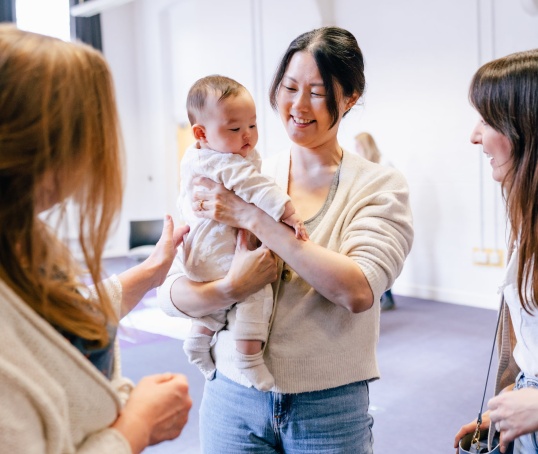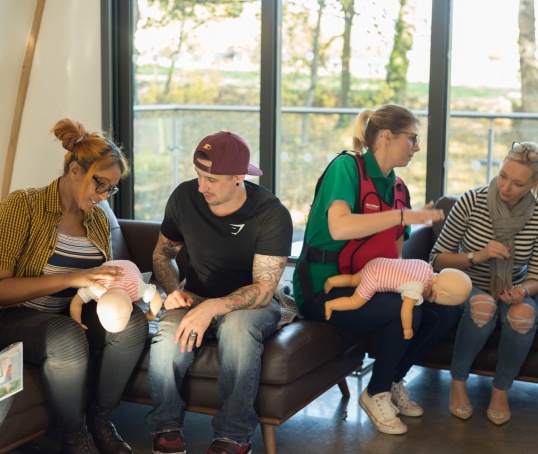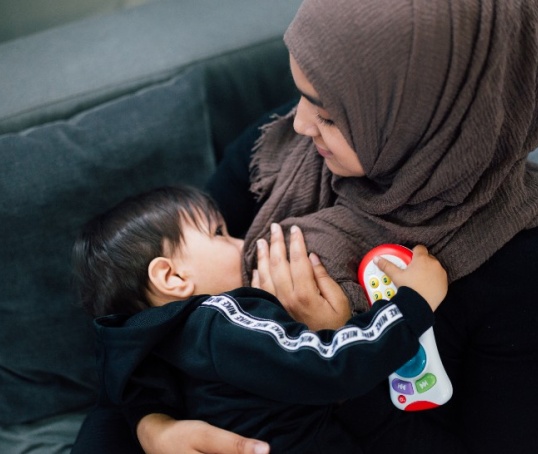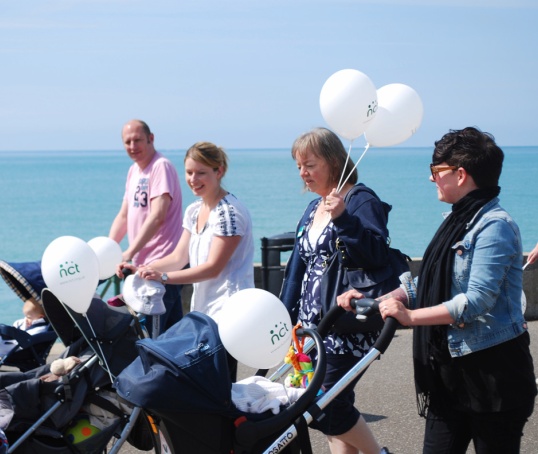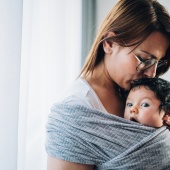Swaddling is the practice of wrapping a baby in a fabric cloth, which might help them to soothe and settle (Lullaby Trust, no date). The baby should be wrapped cosily but not too tightly.
How do I swaddle my baby?
Always place a baby on their back to swaddle (Lullaby Trust, no date). Only swaddle their body, and not their head. If the baby is over three months old, keep their arms free.
The fabric should be secure so no loose fabric can cover the baby’s face, but not so tight that breathing is restricted (Lullaby Trust, no date). The Lullaby Trust has a picture guide to swaddling.
What can I use to swaddle?
Use a lightweight fabric like a thin muslin or cot sheet. A thick blanket could make the baby too hot (Lullaby Trust, no date).
There are also swaddle blankets and bags available to buy. Before using these, check they meet safety standards and are the right size for the baby (Lullaby Trust, no date). Use the lowest tog rating so the baby doesn’t overheat.
It can fit a baby better to use products based on their weight, rather than their age (Lullaby Trust, no date).
What about hip dysplasia?
The baby must have wiggle room around the hips to allow for a natural position. Their feet and legs must be able to move freely and bend at the hip (Basis, no date; Lullaby Trust, no date).
If the swaddling is too tight around the hips, this can cause developmental dysplasia of the hip. This is where the ball and socket joint of the hip doesn’t form properly.
Considerations when swaddling
Swaddling is safest if done from birth. Beginning at two to three months old, when a baby is not used to it, can increase the risk of Sudden Infant Death Syndrome (SIDS) (Basis, no date). When a baby is able to roll onto their front, swaddling should be stopped.
Don’t swaddle a baby if (Basis, no date; Lullaby Trust, no date):
- They’re two to three months old and you haven’t swaddled them before
- You’re bedsharing. The baby won’t be able to alert the parent if they get too close and they may get covered in bedding
- They have an infection or fever, as their temperature may be raised
- They’re showing signs of rolling (this could be between three to six months)
How do you stop the baby getting too hot?
It is important to make sure the baby doesn’t overheat as young babies can’t regulate their temperature. This is especially true if swaddling helps the baby sleep deeply (Lullaby Trust, no date).
- Keep the room temperature at 16°C to 20°C
- Use a muslin or cotton sheet rather than a blanket to swaddle
- Make sure they’re not wearing very warm clothes to begin with
- Ensure the baby isn’t near a heat source, eg a radiator
- Don’t put another blanket over the swaddled baby
- Don’t put a hat on a baby if they’re being swaddled
- Feel the back of the neck or chest to check they’re not getting too hot. If the baby feels sweaty or too warm, unswaddle them (Lullaby Trust, no date).
Does swaddling affect feeding?
Swaddling might put the baby in a deeper sleep. Babies wake frequently for safety reasons and developmental reasons, such as waking to feed (Basis, no date).
Sleeping too soundly might affect the baby’s weight. When they are wrapped up, it can make the baby’s hunger cues difficult to see. It can also reduce crying, which alerts the parent to feed the baby (Dixley & Ball, 2023).
This might also make it harder to start breastfeeding after the baby is born. It can slow down the mother or birthing parent’s milk production if the baby is not feeding frequently (Dixley & Ball, 2023).
What about SIDS?
It was previously thought that swaddling could help prevent SIDS. It was thought to help babies settle on their backs to sleep. It also stops bedding moving up and covering their face (Basis, no date).
However, the ability to wake frequently is a factor in reducing SIDS. Recent research suggests that babies may sleep so soundly while swaddled that they might reduce their ability to wake if something is wrong. For example, this could be an episode of sleep apnea (a pause in breathing) (Dixley & Ball, 2022).
This is particularly true when swaddling is introduced at a couple of months old, rather than newborn (Dixley & Ball, 2022). For this reason, if the decision is made to swaddle, start as a newborn and not later.
Basis (no date) Swaddling for sleep https://www.basisonline.org.uk/swaddling-for-sleep/ [11 Mar 25]
Dixley & Ball (2022) The effect of swaddling on infant sleep and arousal: A systematic review and narrative synthesis https://doi.org/10.3389/fped.2022.1000180
Dixley, A., & Ball, H. L.(2023). The impact of swaddling uponbreastfeeding: A critical review. American Journalof Human Biology, 35(6), e23878. https://doi.org/10.1002/ajhb.23878
Lullaby Trust (no date) How to swaddle your baby or use a baby sling more safely https://www.lullabytrust.org.uk/baby-safety/baby-product-information/sl… [11 Mar 25]


